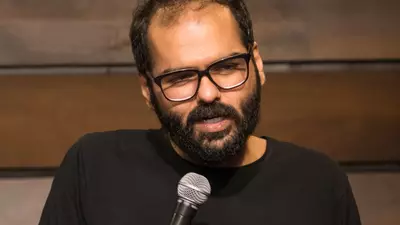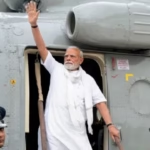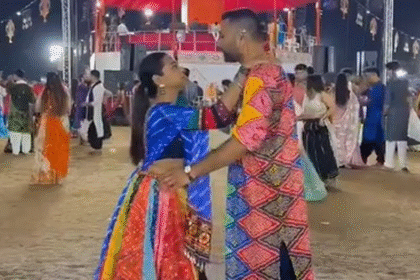Is India Facing a Humour Crisis? Comedians and Writers Weigh In
Chandigarh: Once known for its earthy wit, street-smart repartee, irreverence and instinctive ability to laugh at itself, Indian society today seems trapped in a growing humour deficit in its daily life.
What was once casual banter till India’s mid-adulthood, when humour was taken for granted, is now forensically dissected for imagined slights; witticisms and jokes risk being misconstrued as insults, provocations or veiled political statements, banter triggers offence, and satire is increasingly being labelled as sedition.
Once a pressure valve for public frustration in drawing rooms, WhatsApp groups, comedy clubs or editorial cartoons, humour is now a potential trigger for outrage. Telling jokes at chai stalls, in drawing rooms and at addas across urban India, leg-pulling among friends, witty retorts in crowded buses, even irreverent mocking of netas and babus were markers of a society that did not take itself too seriously and was capable, in ample measure, of laughing at itself.
Sadly, that’s history.
Light-hearted joviality in offices is now policed for tone and political correctness, while in schools and colleges, humour amongst peers is more guarded and cautious, lest it be misconstrued. Even in the privacy of homes, it often fails to even register, as elders and youngsters no longer share cultural references or tolerance levels, and the fear of saying the ‘wrong thing’ outweighs the unadulterated joy of shared spontaneous laughter.
“They (the authorities) have criminalised being funny,” stand-up comedian Kunal Kamra declared in an interview with The Wire in 2020, whilst the late celebrated cartoonist R.K. Laxman earlier declared that his ‘Common Man’ was silent and no longer amused. He was afraid to laugh in case someone got offended, he declared in the early 2000s.
Stand-up comic Vir Das put it a little more starkly, following a severe backlash to his droll ‘Two Indias’ monologue at the Kennedy Centre in Washington in 2021. He tweeted that Indians were not losing their sense of humour, but that it was being taken from them (by officialdom), one complaint at a time.
Other pro-establishment celebrities, however, argued that limits were both necessary and justified.
Actor and BJP MP Kangana Ranaut, for instance, has frequently asserted that comedy should not be centred on criticising the country or its culture. That’s not humour, she has said, but mockery under the guise of liberalism. Similarly, television anchor Sudhir Chaudhary contends that some comedians today used freedom of expression to promote ideological agendas. “That’s not freedom – it’s propaganda through jokes,” he has stated.
Meanwhile, the public space for irreverence, rather than being a means to poke fun at power or question state absurdities and corruption, has become a highly risky business, especially if it strays a little beyond the anodyne in a politically polarised environment. Even feeble attempts at lampooning authority or officialdom runs the risk of being greeted with vicious trolling, First Information Reports (FIRs) or incarcerations and in many instances, all three.
The shift in humour from droll to dreary has been further eroded by the omnipotent online culture that provokes and rewards anger. In this tectonic shift, social media has replaced spirited street-corner banter with sanitised, filtered jokes, where ‘likes’ have become trophies of what passes for humour and mirth. Often, a harmless comment, stripped of context, can trigger a storm, robbing it of its intended spontaneity, mischief, and cordiality.
The resultant humour remains cautious, sterilised, and often dull, reduced to safe subjects and recycled tropes, much like German jokes, which 19th century American writer and humourist Mark Twain said were no laughing matter. Real satire – one that poked fun at the powerful, questioned societal hypocrisies and norms, or exposed cultural absurdities – was near extinct and irreverence was no longer celebrated or encouraged, particularly in the formal electronic or print media.
Alongside, the language of humour itself across urban India had narrowed, where largely Hinglish ‘vegetarian’ jokes lacked the knock-out punch of robust Punjabi ones from yesteryears, a wicked Malayali comeback or even a sly Tamil pun.
A plethora of hilarious Punjabi jokes from countless impromptu gatherings in my youth – with their earthy punch and saucy irreverence – still linger as iconic, endlessly amusing memories, though now retold sotto voce. These gems were joyfully embellished over the years by generations of wickedly witty Punjabis, each adding their own quirky, risqué and deliciously inventive twists, turning simple jokes into sagas of mischief and social insight.
Many carried pleasurably imaginative and bizarre plots, often laced with sharp social commentary reflective of their times. They weren’t just jokes – they were mini-performances, a joy to recount, and an even greater pleasure to hear and relish. But, unfortunately, what was once shared freely is now whispered, the laughter tempered but not entirely silenced.
These days, some of us greybeards diffidently ask – or are asked in return – ‘Heard any genuinely funny new ones lately?’
The standard answer is largely a sheepish ‘No’. But in apologetic defiance, many of us reach defensively for their cell-phones to read out a recycled joke or to forward one via WhatsApp which has become today’s ultimate humour crutch.
And though fleetingly mirthful, this form of humour remains impersonal – a dehumanised, utilitarian exercise that misses the tone, tenor, body language, and above all, the theatricality accompanying a well-told, and at times, even the not-so-good joke. Doubtlessly, this WhatsApp substitute robs the moment of its pitch, spectacle, warmth and the vital human connection that only live, personal storytelling can evoke.
Impersonally e-mailing jokes or circulating them via social media is the easier, more practical and lazier amusement alternative. Even stand-up comedy emerges like a poor substitute, part of the larger subcontracting syndrome in a world where, at a personal level, we’re becoming more dour than droll, more reverential than refreshingly irreverent.
Regrettably, our drift into this digital sphere has, for audiences, disappointingly put paid to raucous, thigh-slapping guffaw sessions, accompanied by gleeful shrieks and high fives as delightfully bawdy and lesser-rollicking jokes and irreverent tales surged at riotous gatherings years earlier.
As an ageing humourist amusingly put it, these extravagant, albeit involuntary reactions of several generations of now aged Indians, erupted like a shaken soda-water bottle or beer can – sudden, loud and delightfully messy. These sessions were not only therapeutic and salutary, but even years later, hugely memorable.
But to make matters worse, even unimpeded laughter, from the belly outwards, is now carefully rationed, considered impolite. In our age of curated seriousness, genuine, unfiltered mirth is decidedly frowned upon in polite company, and from being the accepted and desired norm in yesteryears, such riotous jollity is fast becoming the exception.
It’s also an indisputable fact that, as a people, most Indians tend to take themselves far too seriously – hobbled by an ancient caution, or perhaps superstition, that gratification in any form, especially laughter, is sinful or somehow licentious.
Then there’s that age-old statutory warning we’ve all grown up with: laugh too much, and providence will balance it out by making you cry just as hard.
This inherent deterrence, combined with our increasingly overwrought, politically correct, uptight and terminally self-absorbed and politicised society, has brought us to a strange inflection point where most people have wilfully taken to gagging the gag.
However, alternately, albeit often overlooked, there exists a seamy and unpleasant layer of humour – the scatological, slapstick and lowbrow strain that relies on bodily functions, sexual innuendo and crass exaggeration to appeal to our most basic instincts. This genre, often dismissed as crude, persists in limited quarters as it triggers instant, unfiltered laughter which appeals directly to raw emotion.
And yet, in this growing humourless wasteland, all is not lost. Shades of the Indian sense of humour still endure in pockets: in memes, in regional comedies, in political cartoons that survive despite the risk, and most refreshingly, in rural India.
In small towns, roadside dhabas, village squares, and paan-stained tea stalls, wit still remains earthy and spontaneous. Jokes here aren’t merely told – they’re enacted, lived and passed on like erstwhile oral tradition. Relatively free, for now, from the anxieties of self-censorship and political pressure, rural humour remains uncurated, unselfconscious and to some extent, relatively intrepid.
But the everyday casualness with which humour was once exchanged – without fear or consequence – has faded, possibly permanently. Reclaiming that ease will not only necessitate rebuilding societal tolerance for disagreement, but also shedding hypocrisy and acknowledging our foibles and collective public infirmities.
This remains essential; for when people fear to laugh in public or edit their witticisms before they speak, that society is not just cheerless, but has lost its soul.
Also Read: PM Modi Unveils Rudra Roop of Kaal Bhairav and Launches Operation Sindoor in Varanasi








